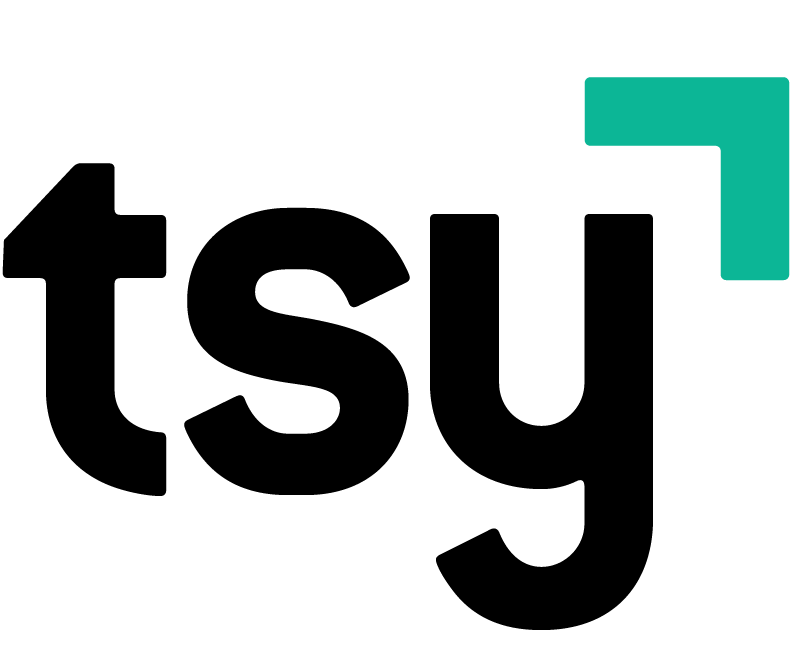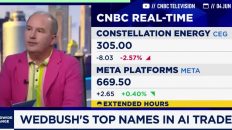Mentioned in Video:
- Digital Wallet Companies Can Bank the Unbanked, While Traditional Banks Cannot (ARK Invest): https://ark-invest.com/articles/analyst-research/digital-wallet-companies/
- Will Bank Branches Give Way to Digital Wallets? (ARK Invest): https://ark-invest.com/articles/analyst-research/digital-wallets/
- Bank Revenue from Credit Cards Could Be Cut in Half in The Next 10 Years (ARK Invest): https://ark-invest.com/articles/analyst-research/credit-card-industry/
- Support the channel and get extra member-only benefits by joining us on Patreon: https://www.patreon.com/tickersymbolyou
⚠️ Cathie Wood's warning to big banks: adapt or die. ARK Invest's Big Ideas 2021 includes digital wallets like SQ (Square stock), PYPL (Paypal stock), AAPL (Apple stock), which are top holdings in ARKW and ARKF. Will there be a day where banks are no longer too big to fail?
Video Transcript:
[00:00:00.000]
Let's just state the obvious, as you mentioned, some of these names banks are so f*****. So f*****.
[00:00:05.160]
I mean, people go, I'm going to short Tesla. I go, why don't you short the banks? I mean, you may take a 20% risk, but they're going to zero.
[00:00:12.450]
Those dummies have lost so much money. How many times you have to get your face ripped off to realize you're just an idiot? Go short a bank.
[00:00:19.820]
If we learned anything from 2008, it's that big banks are too big to fail. So who in their right mind would go short a bank? And what is going to replace them. If you didn't know, ARK Invest are thematic investors. They create funds themed around the technology platforms they think will change the world in big ways and obviously make a lot of money in the process as they replace whatever came before them. Big Ideas is a publication that ARK Invest releases every year to talk about the groups of technologies they think are going to change the world soon, like, starting-now-soon.
[00:00:52.500]
One important note I mention every time is that these Big Ideas are not independent. The technologies that power these platforms are overlapping more and more, and artificial intelligence plays a serious role in almost all of them. Deep learning, an important area inside artificial intelligence is represented in almost every fund. Here's how I think their six actively managed funds, ARKK, ARKG, ARKW, ARKQ, ARKF and the soon to be released ARKX map onto these Big Ideas. You can find a lot more information on each of their funds, including the upcoming ARKX in the description below.
[00:01:26.880]
At the center of ARKF, ARK Invest's fund themed around financial technology, and ARKW, their fund themed around next generation Internet applications, is a big idea called Digital Wallets. That's our focus here because that is what's disrupting traditional banks. Right before Big Ideas 2021 was released to the public, Cathie Wood gave a short presentation during an ETF Trends webinar hosted by Tom Lydon. The full presentation is a whopping 112 slides along, but Cathie had only about 20 for this talk and wasn't in control of the slides being shown.
[00:01:58.650]
Since I'm sure you'd rather hear Cathie Wood talk instead of me, what I did was gather all the Big Ideas slides from the past five years, read them all, and picked the best slides on Digital Wallets based on what Cathie Wood thought was important enough to share during her limited time talking to these fund managers. After Cathie shares the highlights, I'll dive deeper into the key points of Digital Wallets, the Big Idea disrupting big banks.
[00:02:22.110]
Digital wallets. These are the new bank branches in our pockets or in our handbags and we believe they're going to scale. They're in the process of scaling. Now here in the United States, it's cash, app and Venmo primarily. Of course, we've seen, We Chat, We Chat Pay an alley pay scale in China. So we were a little more developed and had good financial rails, which China did not. So they led the charge into this space. Again, the Coronavirus Turbo has turbo charged it. The reason this is happening is not just because we're dealing with contactless payments.
[00:03:04.360]
So we don't have to worry about the virus with digital wallets, whereas we do with credit cards and debit cards. I think they actually are more virulent in terms of spreading the virus than cash itself. So digital wallets have gotten a booster here, and their cost of customer acquisition is a fraction of that of traditional banks: $20 versus anywhere from $150 to $1500. And the reason banks were willing to pay so much is their customers were so loyal. Well, we think that's about to change and that banks are in trouble.
[00:03:50.250]
And we think that the valuation of these digital wallets is going to scale enormously during the next five to ten years. So today you can see here on this chart, Venmo and Cash App are valued in the marketplace at roughly between 250 and $700 per user. And we see that that we believe if they capture the share of banking business, brokerage business, insurance, we see that they could scale to nearly $20,000 per customer. Now, what we've included in this big ideas that we did not last year was 10,000 of that roughly will come from Ecommerce.
[00:04:44.010]
If you study WeChat Pay, you'll see that half of the time spent on WeChat Pay is in payments and then half in Ecommerce. Again, another big opportunity that we really haven't taken into enough account last year when we did Big Ideas.
[00:04:59.800]
Let'S break Cathie Wood's presentation down into three parts. First, let's compare the benefits of a digital wallet compared to a traditional bank. Second, let's see how many people a digital wallet can serve versus a bank. And third, the amount of services a digital wallet can provide each person versus a bank. Let's start with the benefits. Physical banks do have real benefits. You can walk into a bank and talk to someone for basically, any type of normal finance related need: credit cards, checking savings accounts, loans for big purchases, help with financial planning and so on.
[00:05:32.490]
Brick and mortar banks are the financial hubs of the communities they serve. That's why banks often have the biggest, most opulent buildings in the best parts of town. No, seriously, these buildings are gorgeous. I wonder how much they cost. Anywho, big banks used to be great places to store your wealth. Depending on your age, you may not know that high yield savings accounts actually used to be high yield. In the late 80s and early 90s, annual returns on savings accounts were north of 8%. 8%.
[00:06:01.830]
In my opinion, a lot of the ideas we hear from our parents about saving money come from the fact that they enjoyed real high yield savings accounts. Today, high yield savings accounts have yields of about half a percent to 1% per year. Instead, banks offer upfront limited time promotions. These tend to be things like extra points on your first few thousand dollars worth of purchases with a credit card. Reducing or waving fees for your first 90 days are lowering an interest rate for the first year.
[00:06:29.710]
This is how banks make a lot of their money, interest rates on loans and lines of credit, as well as fees, annual credit card costs, ATM fees, overdraft fees, account closure fees, and my personal favorite, non sufficient funds fees. That's the one where you get charged money for not having enough money. I'll explain why banks need to charge these fees in a couple of minutes. For now, one good question you can ask yourself about your bank benefits is, are the these real benefits or are they actually temporary reductions in drawbacks?
[00:07:01.150]
My answer to that question for myself was pretty eye opening. If you want to withdraw cash to split a bill or leave a tip, or pay a buddy back after you lost his physical copy of Super Troopers. Sorry, dude. You need to go to a physical location, touch a physical ATM machine, put physical money into your physical wallet, and then physically go hand it to your physical friend. That's what physical bank infrastructure is really designed around: convenient access to physical cash.
[00:07:26.640]
I'm sorry. Are you saying…?
[00:07:28.590]
Physical. Digital wallets take all of these ideas and digitize them from the ground up. You don't need to pay your buddy back in cash for his copy of Super Troopers. You can then mow it to him or Cash App or Google Pay or Apple Pay or WeChat Pay or Alipay. Those are the big digital wallets in this space, and ARK Invest holds all of these companies in ARKW or ARKF because their vision of the future of finance involves easy, cashless, direct peer to peer value transfers, and these solutions fulfill that vision.
[00:08:02.450]
Now, you don't have to be in the same room or even on the same continent as your friend to make this transaction. Maybe one day you won't even have to be on the same planet. In a world of social distancing and not wanting to touch stuff, this benefit has gained a lot of real value. So, where brick and mortar banks offer temporary promotional benefits to acquire customers, the benefits of a digital wallet are inherent to the platform itself. They conveniently exist on your phone, tablet or computer, and they offer easy and contactless ways to transact with businesses and other individuals.
[00:08:35.010]
This brings us to our second point, the amount of individuals that banks and digital wallets can serve, which boils down to exactly one thing, what can they each provide to a customer while remaining profitable. And profitability boils down to just two things: the amount of money a customer will spend over their lifetime with the business minus the cost of acquiring them in the first place. Simple, right? But being profitable for a big bank is not easy. Remember what I said earlier about those gorgeous buildings, the biggest buildings in the best parts of town.
[00:09:06.270]
It turns out that the average bank branch costs more than half a million dollars to maintain per year. Staff, furniture, computer systems, software costs, utilities, insurance, and all the other costs that come with operating and securing such a branch. JP Morgan Chase has over 5000 bank branches at 500000 per year per pop. That's $2.5 billion in bank branch costs alone. Don't forget about those ATM machines and kiosks that big banks place in malls, airports, train stations, rest stops, and so on. Chase has another 16000 of those.
[00:09:41.480]
As a result, Chase has 256000 employees worldwide. By comparison, Square, ARK Invest's third largest position, has just 6000 employees. Oh, and just about as many active accounts. Yikes. Bank of America has 4600 branches and another 16000 ATMs. Wells Fargo, 8000 branches and 13000 ATMs. We can go down and down this list. Banks aren't exactly slowing down their physical expansions either. JP Morgan planned 50 new bank branches in the Philadelphia area alone in 2018. In late 2020, they opened their 28th physical bank branch in that area.
[00:10:21.120]
Digital wallets just don't expand their reach this way. They scale with the number of downloads their apps get. On the business side, they scale with a number of vendors buying their point of sale equipment and software, if that's part of their ecosystem. When all is said and done, big banks pay about $925 per customer they acquire, which means they need to make that amount of money from the customer just to break even. Remember all those fees I mentioned earlier? That's how they break even. For digital wallets, the average customer acquisition cost is just $20.
[00:10:52.600]
Yep, that's it. This means that digital wallets profit of an average customer right away without relying on gimmicks, I mean, promotions or high rates or fees, while banks will break even on that same customer after eight years. But wait, there's more. The average bank customer today had an initial account balance of around $10,500 and stayed with a bank for around 16 years. That number is way backward looking. This is what Cathie Wood was talking about when she said that customer loyalty is about to change for banks. The median size of a savings account today is just $3500.
[00:11:30.840]
Don't get me wrong, $3500 is a lot of money to me. But to a bank who paid $925 in customer acquisition costs, they would lose about $400 on that account even after 16 years. That means that banks are simply unable to serve their two most intuitive customer bases in America today, the average person and the average unbanked person. Because Digital wallets average around $20 in customer acquisition costs, they can target these exact two customer bases. The median three $500 savings account represents close to $500 in profit over 16 years
[00:12:06.850]
for a digital wallet, the average post tax income of an unbanked household is around $18,000. Assuming they'd be able to put 5% of that into a savings account that's $900 over 16 years, a digital wallet would still be able to make around $100 off that account. A traditional brick and mortar bank would lose $800. So this is the first big takeaway. Due to high customer acquisition costs, traditional banks cannot afford to bank the average person, much less the average unbanked person in America. Digital wallets can, and that's why they will disrupt big banks, and nothing is stopping them from going directly after a big bank's
[00:12:48.970]
existing customers as well. Actually, nothing is really stopping digital wallets from providing all sorts of services that banks can't easily provide. Digital wallets could become a gateway for access to things like crypto assets. Square has converted 1% of its assets into Bitcoin. Because they support the consumer and business sides of every transaction, they can help small businesses offer points on purchases or loyalty programs that pay out in Bitcoin, and the consumer has the assurance that it's good anywhere inside the Square ecosystem. Doing something like this would instantly reduce the friction of transacting in Bitcoin while offering a new way to transact within Square that normal banks just can't compete with.
[00:13:31.030]
Remember, the more money a customer moves through your platform, the more money you make from that customer. In addition to cryptocurrencies, Cathie Wood mentioned Ecommerce, an opportunity that would double the projected customer lifetime value of a digital wallet customer. So what if Square dedicated some screen space to companies it partnered with for travel, shopping, gaming, or business? Then what if it used artificial intelligence to customize your screen to show you the things that you use the most, but also recommend a few other services from its partners based on the things that people like you use the most as well.
[00:14:07.140]
Here's the Big Ideas chart that shows WeChat Pay doing exactly this. In 2019. This means you can think of a digital wallet not just as a bank in your pocket, but also like a Netflix of finance. Instead of customizing your movie categories and recommending things to watch based on your viewing habits, it's customizing your financial menu and recommending stores, services, loans and other promotions based on your spending habits. I'm not saying this disruption will happen overnight, and I'm not saying big banks cannot adapt. Just like legacy automakers can adapt, legacy utility companies can adapt, and so on.
[00:14:46.220]
What I am saying is that they must adapt or else they will get taken down by these artificial intelligence driven banks in our pockets.
[00:14:54.290]
And the final nail in the coffin will be this:
[00:14:56.970]
Because Square is able to monitor every transaction, every minute of the day of these businesses, it has so many more data points than a traditional lender. When Square says to a merchant, you know it looks like you might need a working capital loan or you might want to invest some in some equipment. So it's starting to help small small businesses build their businesses because it has all of this data and is able to understand the kinds of risks that's dealing with.
[00:15:33.290]
But look at the difference between Square and the traditional lender. It has 300000 data points to make decisions on, whereas a traditional lender has 800. It's able to make these decisions in seven minutes, maybe not 2 seconds, like a mean said for Alipay, but seven minutes compared to 60 to 90 days for a traditional lender in the world of small business is a world of difference. And you can see the difference between the kinds of data they're dealing with. Continuous real time data for Square and discontinuous and discrete for the traditional lender.
[00:16:12.600]
So there's no competition here. There's just no competition.
[00:16:15.810]
That was a clip of Cathie Wood speaking at Singularity Universities X Thin South Africa Summit back in 2019. Now imagine being able to leverage all of the data they will get, not just from their own direct data sources, but adding the data they'll get from crypto assets, that ecommerce side, partner programs, and every other thing a software-based digital wallet can integrate with. The number of data points they'll have to help recognize, personalize and finalize loans and services for individuals and businesses will go way up. And just like we're seeing with Tesla's huge data advantage when it comes to unlocking full self-driving, this huge data advantage for digital wallets means their customers are getting fair, more tailored, and more dynamic rates in near real time, making them better banks than big banks today.
[00:17:04.400]
In my opinion, Cathie Wood is right. There's just no competition. And that's why digital wallets are such a Big Idea.
[00:17:13.330]
This is why the disruption, the Goldman's and the JP Morgan, they may just start accelerating to the downside. And it's not one thing. It's over. Like the brain drain is all that's left or the businesses that no one ever really cares about it anymore.
[00:17:26.950]
By the way, let's just state the obvious. As you mentioned, some of these names banks are so f*****. So f******.
[00:17:33.420]
People go “I'm going to short Tesla”. I go, Why don't you short the banks? You may take a 20% risk, but they're going to zero.
[00:17:40.210]
Those dummies have lost so much money. How many times you have to get your face ripped off to realize you're just an idiot? Go short a bank.
[00:17:47.600]
This is Ticker Symbol: You. My name is Alex, reminding you that the best investment you can make is in you.
If you want to comment on this, please do so on the YouTube Video Here














